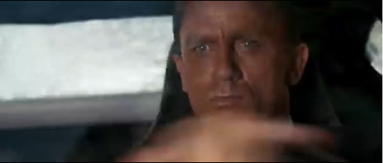It is rare for a film to begin with any noticeable transitions, like a trailer does, because some, such as the commonly used fade transition, suggests a lot of time has past since the previous shot and, particularly in the case of the 'Quantum Of Solace,' that wouldn't make chronological sense - an entirely different tone would be established and that would also appear inconsistent with the stereotypical conventions of an action/thriller. The music that accompanies an opening sequence is a good technique to identify it's genre, as well as convey the mood and tone of the film. In the case of 'Quantum Of Solace,' even when the production logos are being shown, some heavy drum beats are used to suggest tension, soon cutting out and all can be herd is the diegetic sound effects of car engines and gunfire, to continue the suspense in a less repetitive and predictable way than the music did. In comparison, the 'Transcendence' trailer has a more consistent base drop for each fragment and any taglines, to show their significance and create a dramatic effect to hook the audience. Taglines are a technique exclusive to trailers and invite audiences by asking rhetorical questions and/or compelling sentiments that are in context with the plot.
Here are the key features of a trailer:
- taglines
- exciting fragments
- institutional logos
- title appearing at the end
- details of cast and crew
- film title near the beginning
- introduction of at least one character
- indication of place
- historical period established
- creating a mood and tone
- identified genre
- results in questions the audience want answered
- establishes editing techniques that are echoed in the rest of the film
Below are visual examples of both an opening sequence and a trailer:



No comments:
Post a Comment